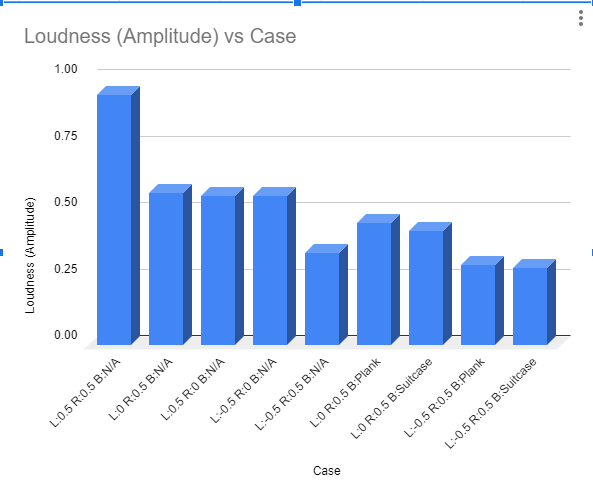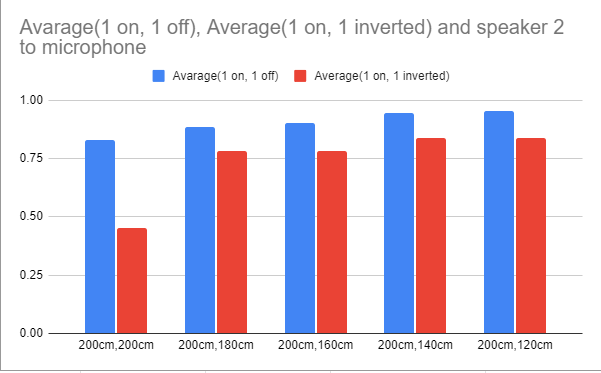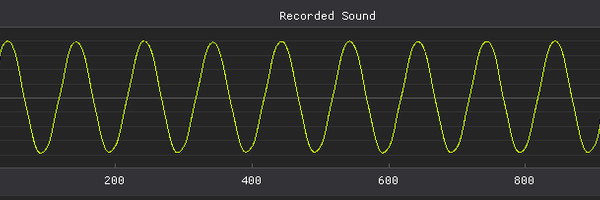The Sound of Silence
Grade 7
Presentation
No video provided
Hypothesis
These are my reaserch questions:
1. Can I make active open air noise cancellation?
Hypothosis:I hypothesize that I can make open air noise cancelation, by recording a sound, and then inversing it, so that sound interference comes into play.
2. Is active noise cancellation better than a barrier?
Hypothosis:I hypothesize that active air noise cancelation is better than a barrier, beacause, it lowers the sound, in real time, where as a barrier, barley blocks it. And the sound can hit the barrier, making the barrier vibrate, and create sound on the other side.
Research
- SOUND
- Sound travels through the air by pushing air particles:
- Sound only pushes the closest air particle, those particles push them into your ears.
- If air particle A is pushed into air particle B, then they shoot away from each other, and then particle B gets too close to air particle C, repeat.
- Air particles want to be far away from each other:
- For example, there are six air particles in a container, every particle repels any other particle, and that would make the air particles evenly spread inside the container
- Sound travels through the air by pushing air particles:
- SPEAKERS
- Speakers have a piece of metal attached to cloth, they also have an electromagnet that can be turned on or off.
- A computer tells the magnet to turn on or off, the metal is attracted to the magnet and pulls the cloth with it. If you turn the magnet off then the metal will go to its old position, the cloth will also go back and push air to create a sound.
- Speakers have a piece of metal attached to cloth, they also have an electromagnet that can be turned on or off.
- WAVES
- Sound waves are just a way of showing sound, but sound is more like sand.
- WAVELENGTH
- A wavelength has two parts to it, a crest and a trough.
- Crest : The tall “mountain” part of a wavelength.
- Trough : The lower “valley” part of a wavelength
- When two air particles are close together, that is drawn as a crest, but when they are pushed away from each other it is drawn as a trough.
- A wavelength has two parts to it, a crest and a trough.
- INTERFERENCE
- Interference works when a crest hits a trough at the same time, they squish together and flatten the wavelength and that silences the sound.
- It is like when particle A1 gets hit towards B1, and when A and B1 are together, A2 goes towards B2, now A2 and B2 are together. B1 shoots towards B2, so now there is a group of three particles ; B1, B2, and A2, A2 wants to get away from B2, so it jets away, and so does B1, but B2 wants to get away from them both, so it just states were it is, and there is no more sound.
- HERTZ
- Hertz is a scale of the frequency of a sound.
- It measures how many wavelengths there are in a second.
- The higher the amount of hertz is, the higher pitch the sound gets, and the less amount of hertz there are, the lower pitch the sound.
- Hertz is a scale of the frequency of a sound.
Variables
VARIABLES
CONSTANT:
- Position of speaker 1 (200cm)
- Position of microphone (0cm)
- Volume of speakers(100%)
- Volume of microphone(90%)
- Sound type(Highway)
- Position of barrier
MANIPULATED(depends on the experiment):
- Position of speaker 2
- Barrier type
- Way of canceling noise
RESULTING:
- The maximum amplitude
Procedure
-
Procedure
- Place the microphone on the 0cm mark
- Set the microphone volume to 90%.
- Place speaker one on the 200cm mark
- Place the speaker two at 20 cm intervals.
- Calculate the correct volume for speaker two.
- Enter the delay, and the volume.
- Run dear-pi-gui.
- Press calculate, which alters the car sounds, and replaces the output.wav file with the altered car sounds.
- Press record, which records the sound going into the microphone.
- Play output.wav, which has the altered car sounds.
- Replay it two more times for an average.
- Place every maximum input into Google Sheets.
Observations



Analysis
Graph #1:Before this graph, I noticed that one of the speakers had a slight change in strength, so I decided to try to see if the noise cancellation would work better if I changed the volume of the second speaker slightly. In the end, I found than 0.53% was better than 0.5%.
Graph #2:In this graph, I put a barrier and active, open air noise cancellation to the test. In the end, active air noise cancellation did the best, they even beat a double barrier by around 10%
Graph #3:In this graph, I tested to see If I can canncel sound even when one of the speakers were moved forward. I added delay and I changed the sond of the second speaker. I found that I could still cancel sound, just not as strongly as when they were right beside each other.
Conclusion
These are my reaserch questions:
1. Can I make active open air noise cancellation?
Conclusion:In conclusion, I can create active open air noise cancellation, by a large margin.
2. Is active noise cancellation better than a barrier?
Concluison:In conclusion, noise cancellation is better than a barrier beacause it actual cancels the sound intead of sorta blocking it.
Application
APPLICATION
This project would be better in real life because, in my testing, it’s on a small scale, and I have walls surrounding my testing space, so the sound coming from my speakers would have bounced on the walls and would have came to the microphone without any interference.
The application of this project is that you can take this and put it on to a larger scale, and cancel a real sound from a highway, you would just have to also record the sound and automatically inverse it and play it.
Sources Of Error
SOURCES OF ERROR
-
I could have had a slight background noise that had raised the maximum amplitude slightly higher.
-
I could have accidentally angled one of the speakers to point slightly away from the microphone, lowering the strength of the interference.
-
I could have had an object like my computer, that could have reflected the noise into the rest of the noise and made the max amplitude higher.
Citations
Acknowledgement
Acknowledgement
- I would like to thank my father for helping me to program and learning python

